Quantum REU
School: Natural Sciences and Engineering
Departments: Physics and Astronomy, Electrical Engineering, and Applied Physics
Rice University offers a new REU program in Quantum Technologies. The Q-REU fellows will be mentored by a Rice faculty in the departments of Physics & Astronomy, Electrical and Engineering and Applied Physics and will be offered the unique opportunity to perform cutting-edge research in atomic physics, quantum optics, photonics and quantum devices.
- Program Start Date: May 25, 2026
- Program End Date: July 31, 2026
- Program Length: 10 weeks
- Application Deadline: March 1, 2026
Program Contact:
For further information regarding this program, please contact Thomas Killian at killian@rice.edu or Guido Pagano at pagano@rice.edu.
Additional Information:
Project listed by Dr. Nai-Hui Chia (nc67@rice.edu)
Computational Complexity for Quantum/AI-safety Problems
The goal of this project is to explore the computational complexity of problems related to quantum physics or AI safety. For quantum problems, some directions including a) the problem of preparing, learning, and testing tensor-network states; b) computing ground-state energy, quantum partition function, thermal state preparation, energy gap of specific Hamiltonians; c) simulating Lindbladian Dynamics and its applications. For AI safety, we would love to explore formalizing problems related to AI safety; for instance, given an LLM, decide if the model is malicious or not, or decide if there exists a succinct explanation of the model. Overall, for these problems, we aim to design new classical and quantum algorithms for them as well as identify their computational hardness through complexity theory and cryptography.
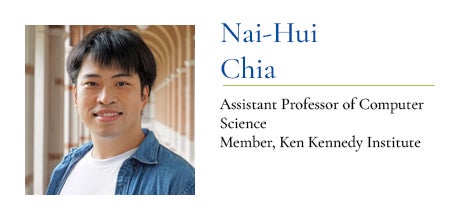
Project listed by Dr. Hanyu Zhu (hanyu.zhu@rice.edu)
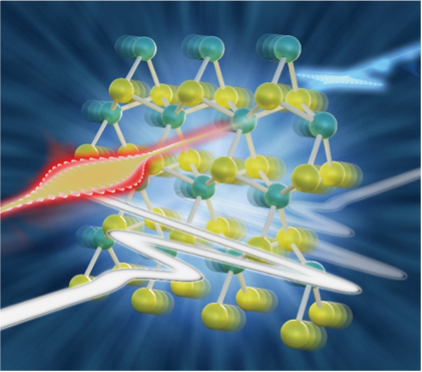
Prof. Hanyu Zhu works in experimental condensed matter physics and ultrafast (10-13 second) materials engineering. His research interest is in the rich non-equilibrium dynamics of quantum materials, particularly electron-lattice interactions in low-dimensional systems, light-matter interaction in nanophotonic structures, and electrodynamics/phonodynamics in correlated and magnetic systems. For example, the quantized lattice vibrations, or phonons, can induce both the structural symmetry breaking like ferroelectricity and electronic symmetry breaking like superconductivity. It has been recently demonstrated that optically pumped coherent phonon excitations can also break time-reversal symmetry, and thus may couple to single spin, magnetism, or other collective phases with spontaneous TRS breaking [1, 2]. To investigate the coupling, Zhu group developed strong-field optics and spectroscopy with high spatial-temporal resolution. The resulting fundamental understanding of the interaction between fermionic quasi-particles and intense coherent bosonic fields is important for developing new quantum electronics. (http://zhugroup.rice.edu)
Next-generation electronics and quantum information technology may be supported by atomic-scale (10-9 meter) materials with strong quantum effects. In this project, we will prepare such two-dimensional (2D) materials and devices, characterize their basic optical and electrical properties, and package them for studying the interaction between chiral phonons and electronic/spin states with nonlinear and terahertz microscopy. For example, when the electronic Coulomb interaction is made strong using proper electrostatic potential and/or superlattice potential, the ground state of the system can exhibit an energy gap that matches the energy of the phonons, enabling strong electron-phonon coupling. During the process, you will learn novel concepts of light-matter interaction physics, the basics of handling electronic nanomaterials, as well as knowledge in ultrafast optical techniques.

Project listed by Dr. Guido Pagano (pagano@rice.edu)
Laser-cooled atomic ions trapped by electromagnetic fields provide pristine quantum systems that can be engineered from the ground up to an unprecedented level of control. Atoms interacting with lasers offer unmatched coherence properties, deterministic entanglement generation, and nearly perfect detection of individual quantum systems. In our lab (http://paganolab.rice.edu), we use trapped ions to assemble atom-by-atom quantum systems whose parameters can be tailored microscopically to investigate unexplored quantum many-body phenomena. In particular, we are interested in gaining control over magnetically sensitive atomic states to encode and manipulate “qudits”. The REU fellow will have to design a build a mu-metal shield for our experimental system, as well as elaborate a design of permanent magnets that allows the magnetic field configuration to be tuned. The REU fellow will acquire a wide range of skills, including COMSOL simulations, CAD design, mechanical assembly, and electronics, to build a magnetic field probe to characterize the assemblies. Another possible, more software-based project involves improving the capabilities of our Python-based control system.
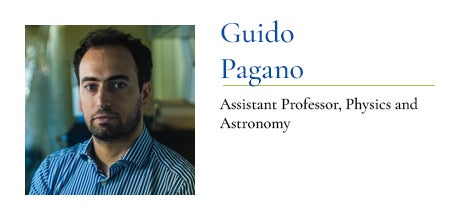
Project listed by Dr. Songtao Chen (songtao.chen@rice.edu)
Quantum Defects and Photonics (QDP) Lab
Optically interfaced solid-state spins are promising candidates for a variety of quantum technologies including quantum computing and communication. These spin systems have the advantage of storing quantum information locally in individually addressable particles that can be manipulated and controlled coherently using optical and microwave fields. Meanwhile, the spin-entangled single photons can be leveraged to carry and distribute quantum information in a network via optical fibers. To build such a fiber-based quantum networking system, atomic defects with optical transitions in the telecom range, such as single erbium ions [1,2] and single T centers [3,4], are preferred to minimize the fiber transmission loss. In our group (http://chenlab.rice.edu), we utilize single T centers in silicon to construct the quantum network node and repeater devices for building a large-scale quantum network. We develop novel techniques and protocols to manipulate the quantum states of the T-center qubits and engineer interactions between them. On a system level, we aim to build spin-based hybrid integrated silicon quantum photonic chips.
One of key tasks in our research is to enhance the light-matter interactions for single T centers in silicon, which is realized by integrating single T centers with low loss, small mode-volume silicon photonic crystal nanocavities. The REU fellow’s research will first focus on the phase-sensitive measurement of the silicon nanophotonic cavity that will be used to couple with single T centers. The REU fellow will actively participate in the design, build-up and characterization of a fiber-based interferometer setup, as well as relevant measurement and data processing to extract cavity reflection profiles. Furthermore, the REU fellow will also participate in analysis of the cavity-enhanced light-matter interaction under the Jaynes-Cummings and Tavis-Cummings framework by using the QuTiP toolbox to solve the Lindblad master equation. This project will train the REU fellow in the techniques of nanophotonic phase-sensitive measurement, laser alignment and stabilization, fiber optics, and fiber-device coupling, as well as general laboratory techniques in computer experimental control and data acquisition. Meanwhile, the project will also train the REU fellow on the theory of cavity quantum electrodynamics and related quantum optical method to control the single T centers inside the cavity.
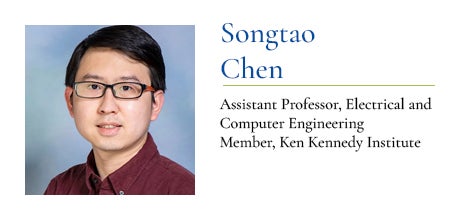
Project listed by Dr. Shengxi Huang (Shengxi.huang@rice.edu)
Single-Photon Emission from Two-Dimensional Materials
Rice SCOPE Lab (https://scopelab.rice.edu/)
Single photons, often called flying qubits, have enormous promise to realize scalable quantum technologies ranging from an unhackable communication network to quantum computers. However, finding an ideal single-photon emitter (SPE) is a great challenge. Recently, two-dimensional (2D) materials have shown great potential as hosts for SPEs that are bright and operate under ambient conditions.[1]
These materials exhibit quantum properties that are generally absent in their bulk counterparts; which includes a layer-dependent bandgap, large exciton binding energies, strong nonlinearities, tunable valley degree of freedom, the ability to host quantum emitters and spin-defects. Moreover, due to their atomic thicknesses, 2D materials can be easily be integrated with electronic and photonic devices, facilitating precise engineering of light–matter interaction at the nanoscale.[2]
It is believed that the atomic defects and strains are responsible for creating single photon sites in such materials. However, deterministic control of such defects and strains have been always a challenge in this field.
Therefore, the master project will include engineering as well as characterizing the single photon emitters mainly in 2D materials. Deterministic creation of the SPE centers at predefined locations will be the main aim for this project. The student will also perform the second order correlation measurements to investigate the purity of the emitters. A Hanbury-Brown and Twiss (HBT) interferometer will be used to perform the autocorrelation measurements. Others important factors such as indistinguishability, brightness, and reliability of the emitters will also be investigated.
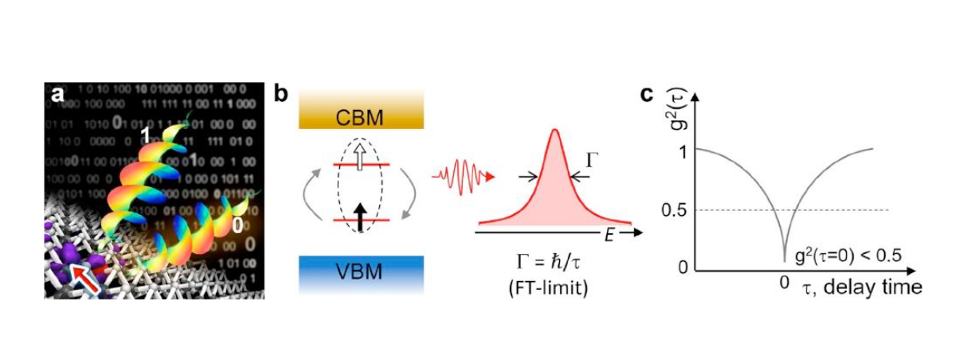
Figure 1. (a) Material defects with well-defined spin-state and consequently polarized single-photon emission can be building blocks of spin–photonic qubit systems. (b) A schematic of a two-level system, which is paramagnetic and is well separated from the band edges and can emit single photons in the required Fourier transform (FT) limit, such that the broadening of emission in the spectral line Γ equals the inverse of the excited-state decay lifetime Γ = ℏ/τ. (c) A typical second-order photon correlation measurement plot g2(τ), as a function of delay time τ, depicting antibunching (no more than one photon is emitted at a time). A value of g2(τ = 0) < 0.5 is a signature of a “good” single-photon, as this quantity is connected to the probability of emitting two photons (or more) at the same time.
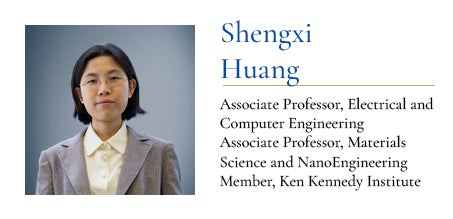
Project listed by Dr. Gyu-Boong Jo (gbjo@rice.edu)
Synthesizing Quantum Metamaterial with Atoms and Light
We are an experimental Atomic Molecular Optical (AMO) physics group that utilizes neutral atoms to build up synthetic quantum systems for exploring the unique interface between AMO physics, condensed-matter physics and quantum information science. We employ diverse platforms—from tweezer arrays to engineered optical lattices—to investigate novel quantum phenomena, including topological matter, non-Hermitian dynamics, open quantum systems, supersolids, dipolar liquids, and quantum droplets. Our group specifically plans to study quantum metamaterials by precisely manipulating atoms in tweezer arrays, as well as to investigate an unprecedented phase, such as a supersolid, in 2D dipolar systems. The REU fellow can engage in various activities ranging from numerical calculations to hands-on mechanical, optical, vacuum technology, and electrical work. Students are encouraged to contribute to ongoing projects according to their abilities and interests. For more information, please visit the website (JoLab.rice.edu).
Project listed by Dr. Thomas C. Killian (killian@rice.edu)
Quantum simulation with ultracold Rydberg atoms
Rydberg atoms are atoms in which an electron has been excited to an extremely weakly bound orbit that takes it far from the nucleus. Ultracold Rydberg atoms are a promising platform for quantum simulation of many-body physics because they have strong, controllable interactions and internal quantum states that can be mapped to properties of more complex materials or other many-body systems that are beyond the capabilities of classical computer calculations to describe. Prof. Killian’s group at Rice has pioneered the study of quantum degenerate gases and Rydberg atoms of alkaline-earth atoms (http://ultracold.rice.edu/), and we are currently developing new techniques to create large networks of internal atomic states for more flexible quantum simulation to study topological states of matter and magnetic interactions. On this project, the REU fellow will learn to operate lasers and electronic equipment in order to produce and trap ultracold atoms and excite them to Rydberg states. The student will also analyze images of atomic clouds and data from charged-particle detection diagnostics in order to study the internal state dynamics of many-body, interacting systems of Rydberg atoms. This project will train the student in the techniques of laser-cooling and trapping of atoms, coherent manipulation of atomic states with lasers and millimeter-wave radiation, and general laboratory techniques in computer experimental control and data acquisition, electronics, vacuum, and optics at the frontier of atomic, molecular, and optical physics.
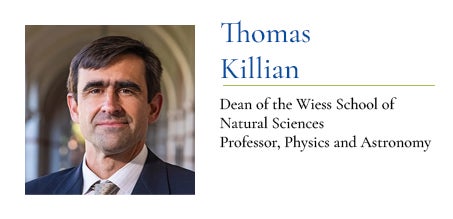
Project listed by Dr. Xuedan Ma (xm20@rice.edu)
Trapping 2D excitons
An interlayer exciton (IX) is comprised of an electron and hole that are spatially separated in different layers but bound by Coulomb interactions. Due to the spatial separation of the constituent electrons and holes, IXs can have lifetimes that are orders of magnitude longer than those of intralayer excitons. Furthermore, IXs possess permanent, out-of-plane electric dipole moments, rendering their binding energies effectively tunable using external electric fields. These characteristics allow IXs to be cooled below the temperature of quantum degeneracy and the realization of quantum Bose gases. Their widely tunable excitonic response is also promising for efficient light emitting and modulation applications. While indirect excitons in conventional III-V semiconductor heterostructures have been extensively studied, those in two-dimensional transition metal dichalcogenide (TMD) heterostructures provide alternative opportunities for exploring excitonic quantum gases and devices at high temperatures due to their considerably larger binding energies. The spin-valley degree of freedom offered by IXs in TMDs may also enable unconventional strategies for data processing and transmission.
In this project, we will explore the trapping and localization of IXs in TMD heterostructures. Specifically, we will prepare TMD heterostructures by stacking TMD monolayers of different bandgaps on top of each other. We will create trapping potentials using external strain or electric fields and monitor exciton motion using high-resolution optical imaging techniques. The successful implementation of these tasks could provide means for generating quantum optical nonlinearity and quantum photon sources.

Project listed by Dr. Han Pu (hpu@rice.edu)
Quantum Simulation with cold atoms
We are a theoretical Atomic Molecular Optical (AMO) group, focusing on quantum simulation with cold atoms. We employ various analytical and numerical methods to study the properties of atomic systems in the ultracold temperature regime. Current interests include light-matter interaction, quantum dynamics of Bose-Einstein condensate or Fermi gas, open quantum systems, machine learning + quantum, etc. The REU student is encouraged to contribute to ongoing research projects or explore new ones according to their interests.

Faculty Program Director

